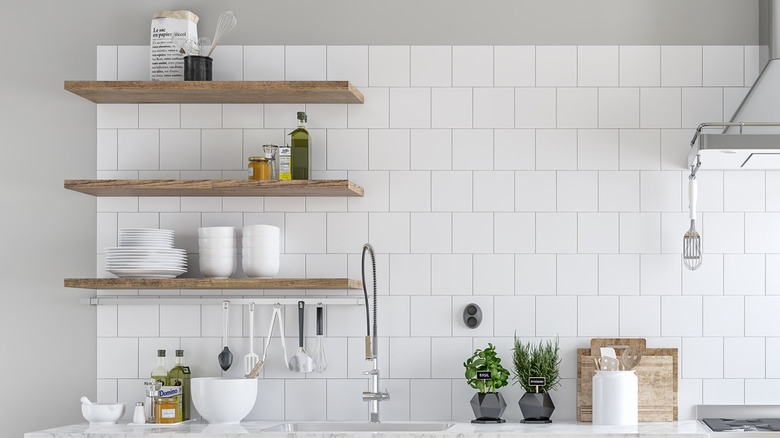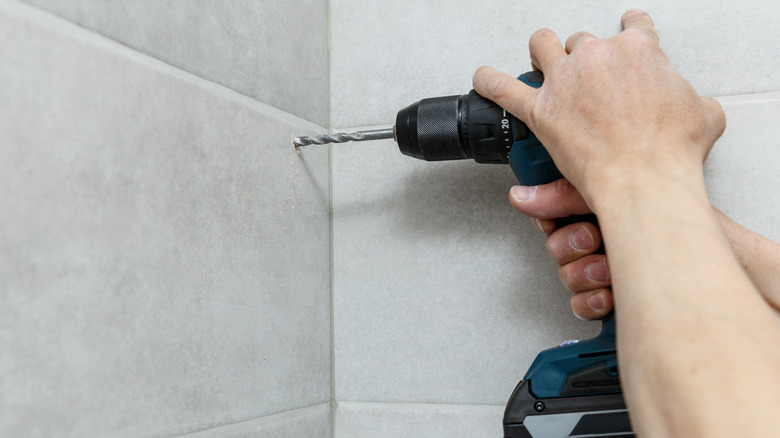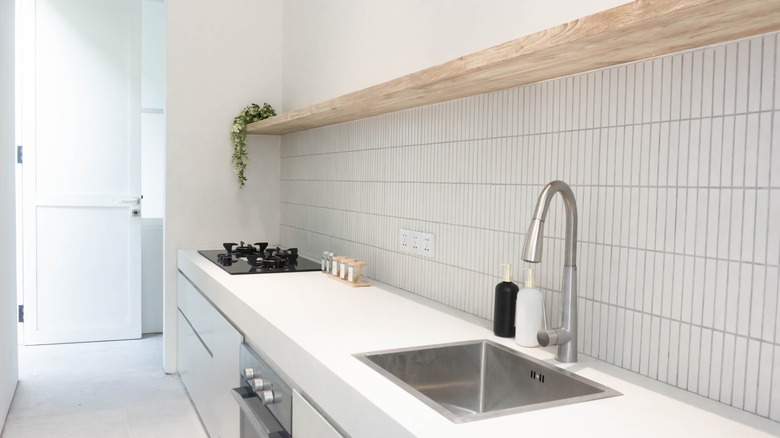The Ultimate Guide To Installing Shelving Over Tiled Walls
We may receive a commission on purchases made from links.
Floating shelves can be one of the best ways to gain some extra storage and display space in places like kitchens and bathrooms. The tiled walls, however, quite common in these spaces in spots like backsplashes and tub surrounds, can sometimes deter homeowners from adding shelves over the material. Driving holes through tile can be a tricky business, causing broken or cracked tiles, unsightly holes, and slightly crooked shelves. With the right tools and techniques, however, you can hang a shelf over tile surfaces perfectly every time. All you need is the proper drill bit and correctly sized anchors and screws
Working with tiles, particularly porcelain or clay can be more difficult than driving anchors and screws into drywall, but it's not impossible. We've rounded up some solutions for making it a task you can easily DIY no matter the kind of tile on your wall or the shelf variety you are installing. There are also some great options if you want to go hardware and hole-free.
Anchoring shelves into the wall
The right tools are important when drilling tiles. You will need a drill and a drill bit designed for driving through whatever material you are dealing with. For porcelain and ceramic tiles, this is usually a diamond carbide drill bit (available from Amazon), which will drill a clean hole without cracking. Begin the hanging process by locating your studs for a secure hang, then use painter's tape to lay out the desired location and size of the shelves you are installing. Use a pencil to mark where you will need to drill your holes.
When drilling, keep the area you are working with moist with a spray bottle of water, which will help to keep the drill bit cool and undamaged. A drill bit that's too hot can mean an uneven hole or damage to the areas around it. If stud placement is not possible, you can also use regular drywall anchors in the tile by drilling a hole large enough for the anchor. Pop it with some pressure or a rubber mallet. Once the holes are drilled, install the shelf brackets according to the instructions.
Non-hardware options
If you do not want to drill holes into your tile, there are other non-hardware ways to hang a shelf, including using a strong adhesive like Loctite Heavy Duty Sealant. This approach works best if you are hanging a narrow shelf along the top of a tiled area since much depends on the support of that thin lip. Using a wood board as the shelf, run a line of the adhesive along the top of the tile and the back of the shelf where it rests on the wall, This will result in a firm fit. Caulk the area between the shelf and the wall for a seamless look. You may also want to brace the shelf from below with another piece of wood until the adhesive and caulk are fully dry.
While this shelf does not possess the weight capacity of a bracketed shelf, you can augment the stability with additional wood brackets on the adjoining walls or cabinets to hold a larger or heavier shelf in place. For renters, hanging over tile may seem a lost cause, but many small shelves can be installed simply with adhesive strips or pads like these Adhesive Floating Shelves from Amazon.


